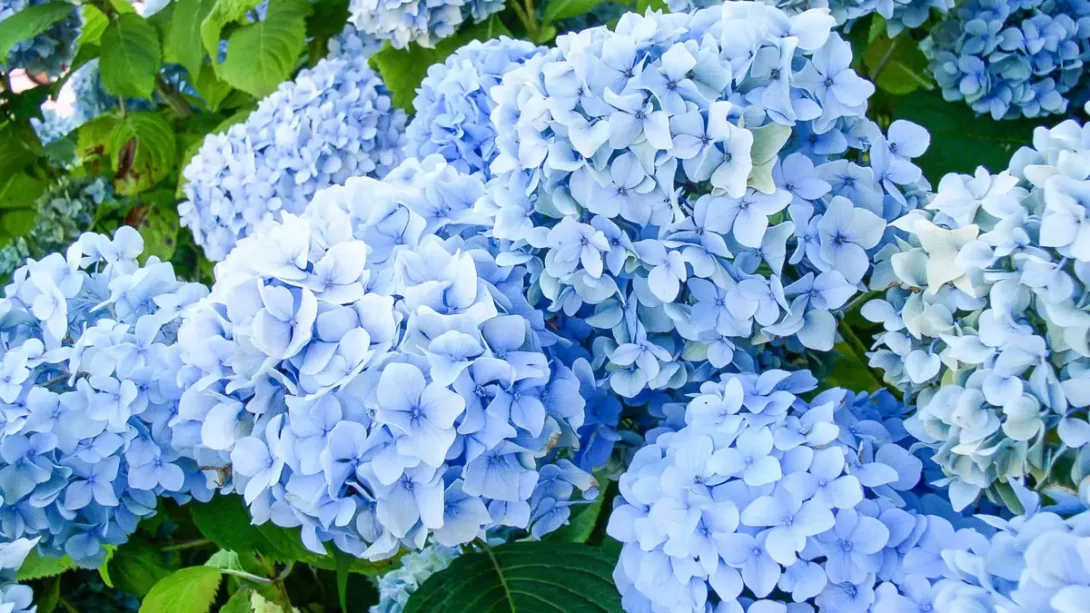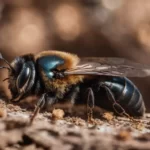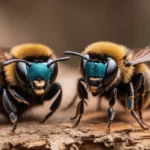Hydrangeas, with their lush blooms and vibrant colors, are a staple in many gardens. These plants not only enhance the aesthetic appeal of a garden but also play a role in supporting local ecosystems. A key aspect of this role involves bees, nature’s vital pollinators. Understanding the relationship between bees and hydrangeas is essential for gardeners looking to create a bee-friendly environment. This article delves into whether hydrangeas attract bees and how gardeners can enhance this natural interaction.
Hydrangeas
Hydrangeas are renowned for their large, showy flowers that come in a variety of shapes and colors, ranging from blues and pinks to whites and purples. Common varieties include the bigleaf hydrangea (Hydrangea macrophylla), panicle hydrangea (Hydrangea paniculata), and oakleaf hydrangea (Hydrangea quercifolia). These plants typically bloom from early spring to late fall, offering a prolonged period of visual delight. While hydrangeas are known for their ornamental value, their appeal to pollinators, particularly bees, is a subject that warrants closer examination.
Bees and Their Floral Preferences
Bees are naturally drawn to flowers that provide their essential needs: nectar and pollen. They are particularly attracted to blooms that offer abundant nectar, high pollen count, enticing fragrances, and vibrant colors. The color preferences of bees tend to lean towards blue, purple, violet, white, and yellow. Additionally, the shape and structure of a flower can influence its attractiveness to bees. Flowers that provide easy access to nectar and pollen are more likely to be visited by these pollinators.
The Relationship Between Bees and Hydrangeas
Delving into the relationship between bees and hydrangeas, it’s important to consider the specific traits of hydrangeas that might attract these pollinators. Hydrangeas exhibit a range of colors that generally align with bees’ color preferences, such as blues, purples, and whites. However, the structure of hydrangea flowers, often with tightly clustered blooms, can sometimes pose a challenge for bees trying to access nectar and pollen.
Observations and studies have shown varying levels of bee activity on different hydrangea species. For instance, the lacecap hydrangeas, with their flat flower heads, are more accessible to bees compared to the more common mophead hydrangeas, which have densely packed blooms. This difference in flower structure plays a significant role in how attractive these plants are to bees.
Differences in Bee Attraction to Various Hydrangea Species and Cultivars
Not all hydrangeas are equally attractive to bees. Species like the smooth hydrangea (Hydrangea arborescens) and the previously mentioned lacecap varieties tend to be more appealing to bees. These species typically have more open flower structures, making it easier for bees to access the nectar and pollen.
On the other hand, some popular cultivars, like the bigleaf hydrangeas, often have large, globe-shaped blooms that can be less inviting to bees. The degree of bee visitation can also vary depending on the specific cultivar’s color intensity and fragrance, factors known to influence bee attraction.
Factors Affecting Bee Attraction to Hydrangeas
Several factors can influence how attractive hydrangeas are to bees. The color and fragrance of the flowers are primary factors. Hydrangeas that emit a subtle fragrance and display colors that fall within the spectrum of bees’ color preferences are more likely to attract these pollinators.
Additionally, the nectar and pollen production of hydrangeas can significantly impact bee visitation. Some hydrangea varieties may offer more in terms of nectar and pollen, making them more appealing to bees. Environmental factors, such as the plant’s location, surrounding flora, and overall garden environment, also play a role in attracting bees.
Enhancing Bee Attraction to Hydrangea Gardens
For gardeners looking to make their hydrangeas more appealing to bees, there are several effective strategies. Firstly, choose bee-friendly hydrangea varieties, such as lacecaps or panicle hydrangeas, which offer easier access to pollen and nectar. Planting these alongside mophead varieties can create a visually appealing garden that also caters to bees.
Companion planting is another valuable approach. Surrounding hydrangeas with bee-attracting plants like lavender, salvia, or echinacea can increase the overall attractiveness of your garden to bees. These companions not only provide additional food sources but also help guide bees to your hydrangeas.
Proper maintenance of hydrangeas is crucial for supporting bee health. Avoid using pesticides, as they can be harmful to bees. Opt for organic gardening practices to ensure a safe environment for all pollinators. Regular watering, mulching, and pruning will keep your hydrangeas healthy, indirectly benefiting the bees that visit them.
Conclusion
In conclusion, while bees do visit hydrangeas, the level of attraction varies depending on the hydrangea species and cultivar. To enhance bee visits, gardeners should consider planting bee-friendly varieties, practice companion planting, and maintain a healthy, pesticide-free garden environment. By doing so, you not only enjoy the beauty of hydrangeas but also contribute to the health and sustainability of the bee population.
This exploration highlights the importance of understanding the dynamics between plants and pollinators. As gardeners, our choices can have a significant impact on local ecosystems. Embracing bee-friendly practices in our gardens is a step towards creating a more balanced and thriving environment. Remember, every flower planted with pollinators in mind is a small but meaningful contribution to preserving the vital role of bees in our ecosystems.



